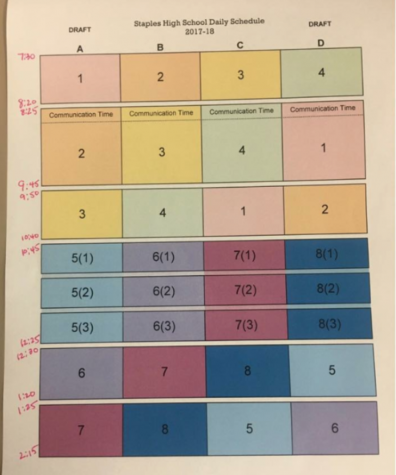There should not “B” a stigma
On a day to day basis, school can sometimes seem insignificant––taking notes from a smart board, being drilled with mathematical equations, scrambling to finish a lab or praying to remember homework.
But when looking at our high school education in the context of our entire lives, we can see that we come to school to learn skills and to attain knowledge that will hopefully prepare us for what comes next.
In order to be prepared, students need to be in classes that fit their own skill sets. However, this can be difficult due to community and parent pressures for achieving high academic excellence. Even more so, colleges stress students to take rigorous course loads and perform well. This all combines to promote a stigma against B level classes, which drives students away from a level of learning that may actually be right for them.
As a board, we are left wondering whether or not weighted Grade Point Average (GPA) fosters this stigma as well. On this, we are completely split––half of us feel that weighting A and B classes the same would help diminish the stigma and serve as an equalizer, and the other half did not.
According to the Staples High School Course Catalog, an unweighted A is the equivalent to a 4.0 GPA, while a weighted A in a B class is a 3.67.
There are definite differences between A and B classes, but some feel that a difference in GPA weight isn’t merited. For example, a GPA in AP Calculus AB and AP Calculus BC is weighted the same, even though BC covers half a year more of material. A and B classes are both college preparatory classes by definition, and while they have different teaching methods, at their core, they teach the same material.
The deflation of the grade value of a B class with the weighted GPA makes students less inclined to take a B level course. From a college perspective, a Staples GPA has very little weight, as most schools calculate their own GPA. This means that there is little to no effect on students who take A classes. Weighting does, however, create an environment in which B classes are viewed as inadequate and below average, even though in reality, they aren’t.
In contrast, the other half of the board felt GPA is essentially irrelevant to the stigma surrounding B classes and that weighting B and A classes equally in a GPA would be unfair to to both sides.
Although students learn generally the same material in both B and A classes, the work-load and expectations of students varies tremendously by level. Students on the board who have taken B classes said that their experiences were significantly easier than their A classes. They also said that equalizing the weight would not only unfairly raise B students to a level they did not achieve, but it would dilute the effort and hard work of A class students.
Furthermore, colleges are beginning to recalculate GPAs based on their own scales and disregard the GPA assigned by the high school when looking at college applications. Many students also felt that the stigma would exist no matter what, and more importantly, that the stigma is surrounding the level, not the GPA weight.
Regardless of the weighting of GPAs, the entire board feels that B classes serve an important purpose for a large population of our student body and should not be eradicated. We feel that what really needs to be eradicated is the stigma that surrounds taking such courses.
Both sides also feel that it is interesting to note how Westport middle schools level math, but the lower level receives no stigma. All classes are weighted the same, and students can choose the assignment that is an appropriate level of difficulty, whether it be the academic, scholar or challenger option.
We never thought we would say this, but maybe middle school got it right.
















































![[Nov. 2016 Editorial] Battling bystander effect requires administrative change](https://www.inklingsnews.com/wp-content/uploads/2016/11/Screen-Shot-2016-11-22-at-1.05.28-PM.png)





